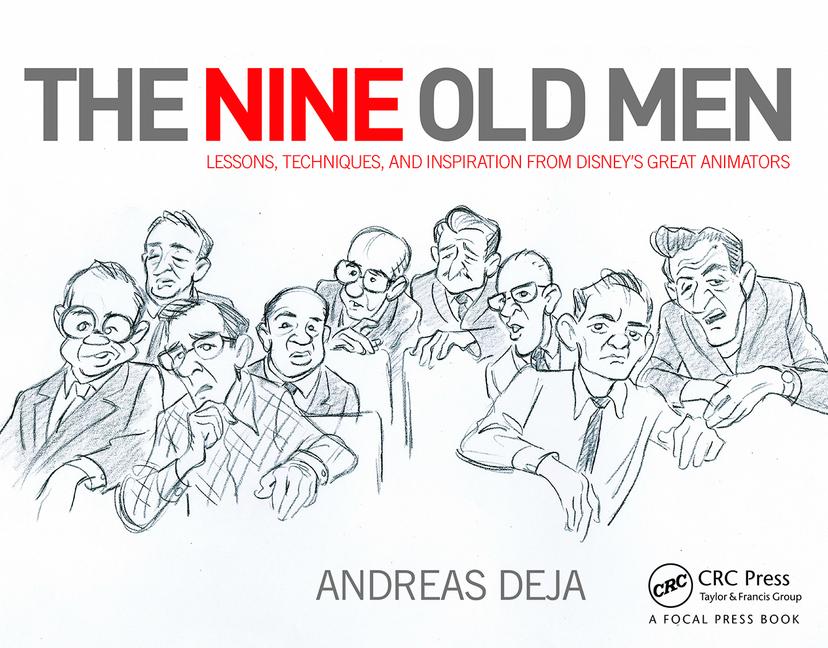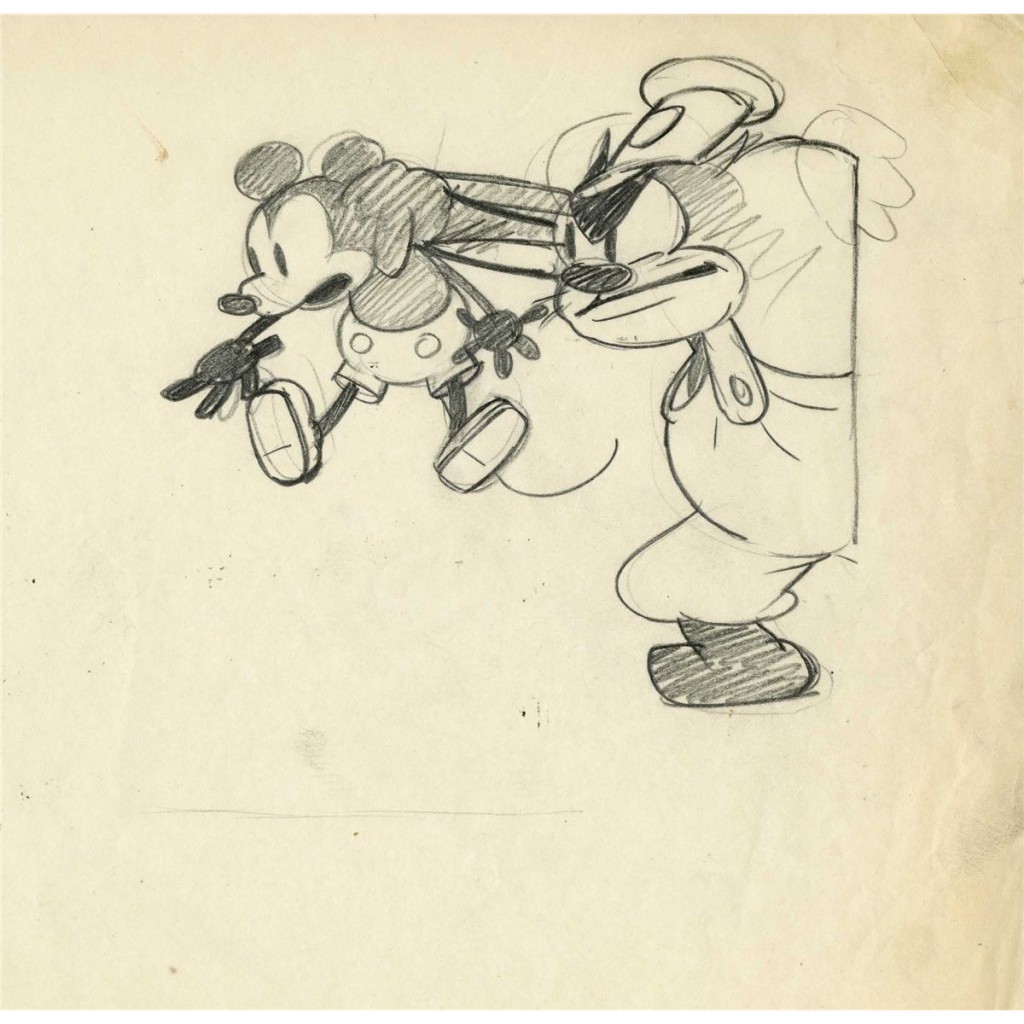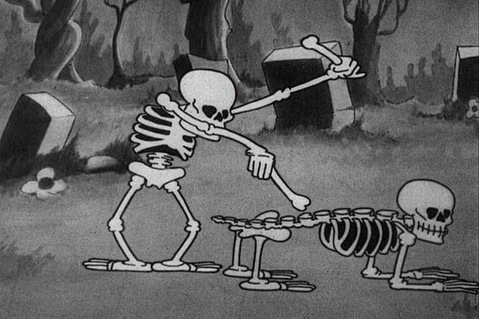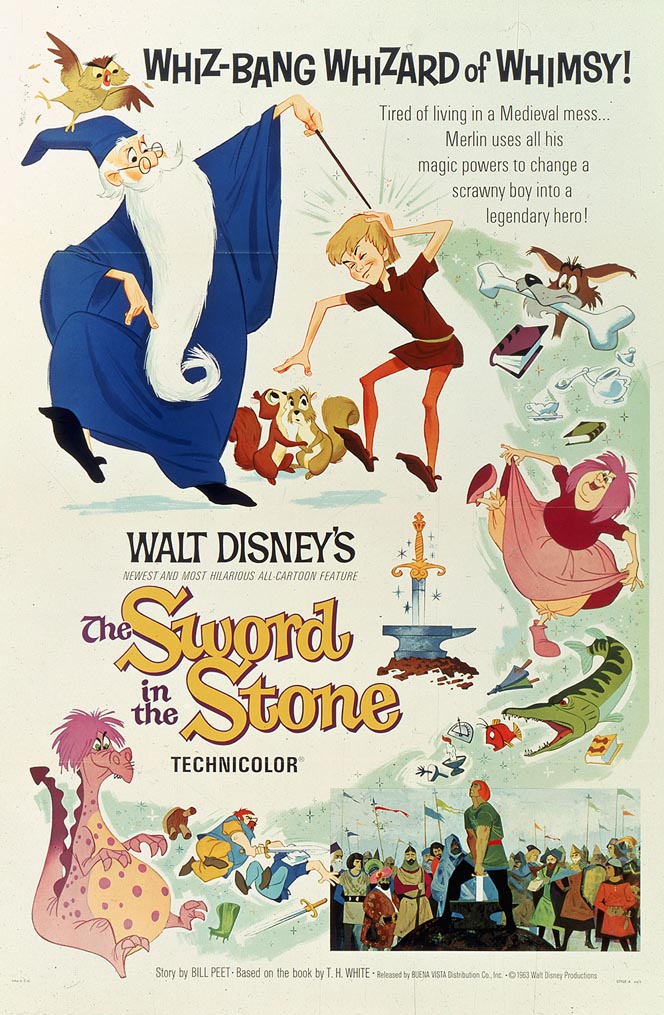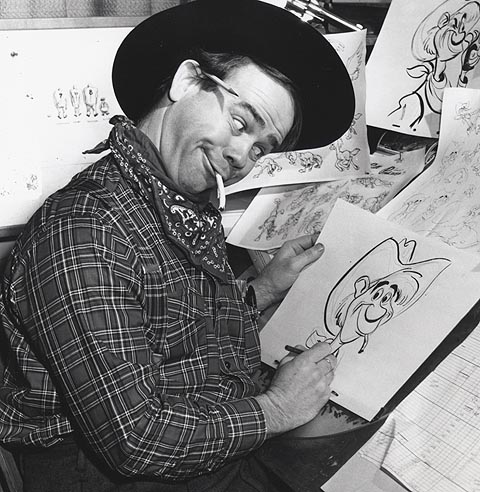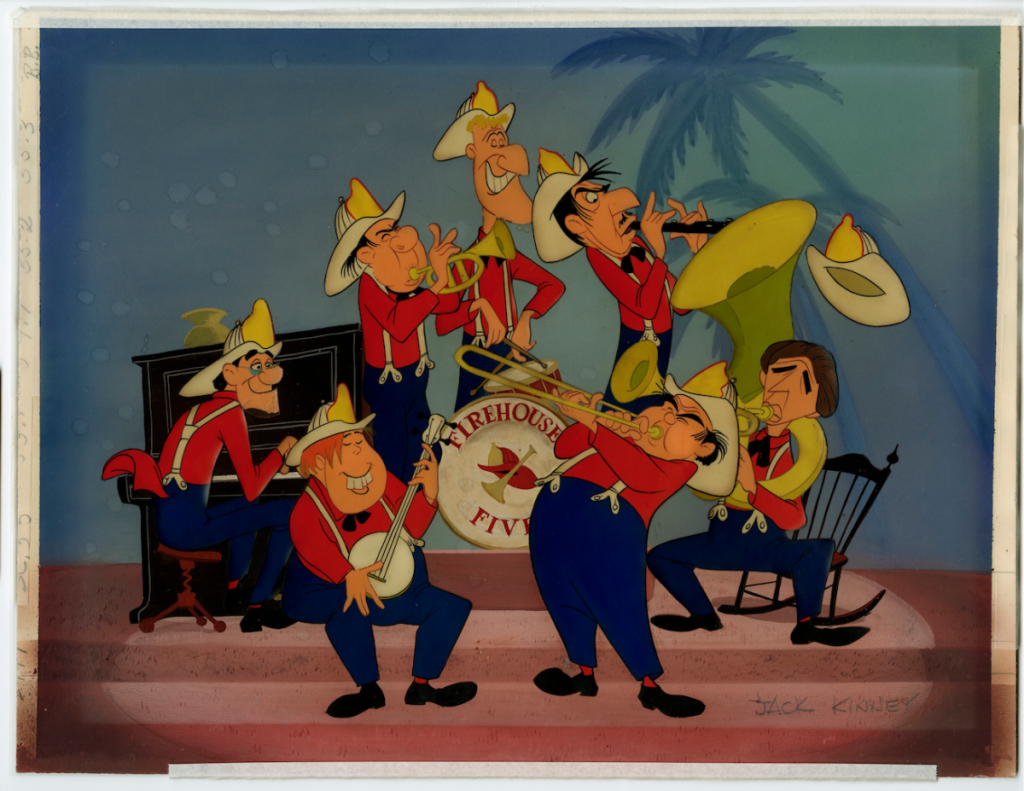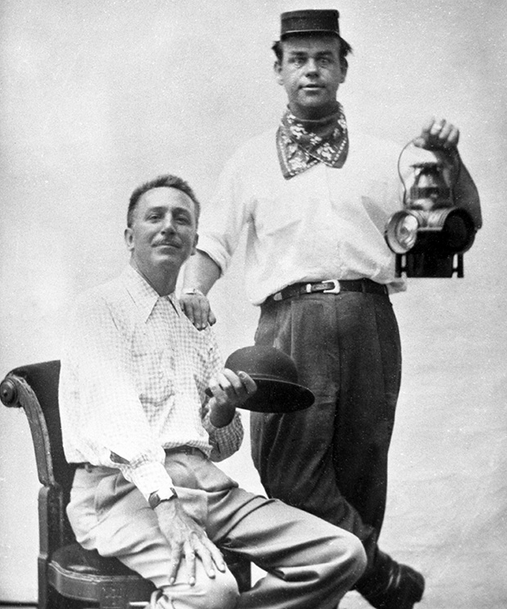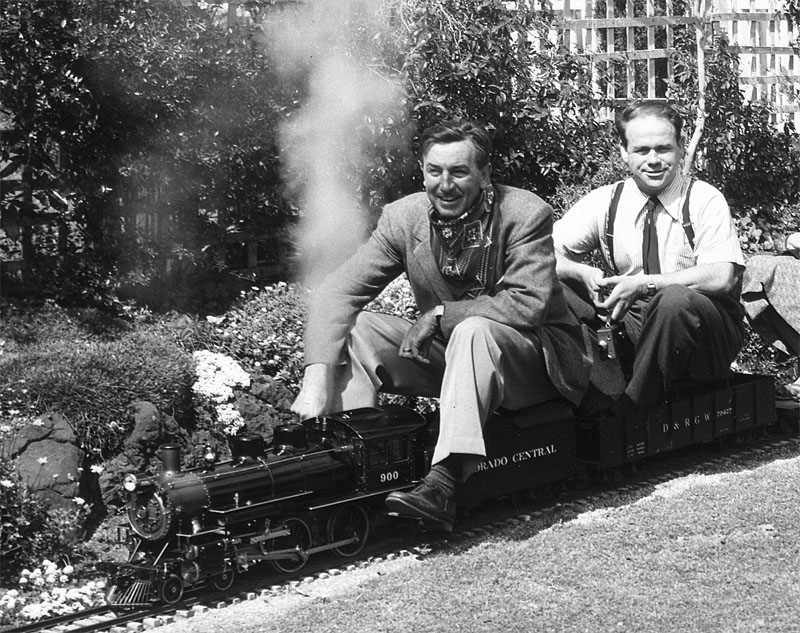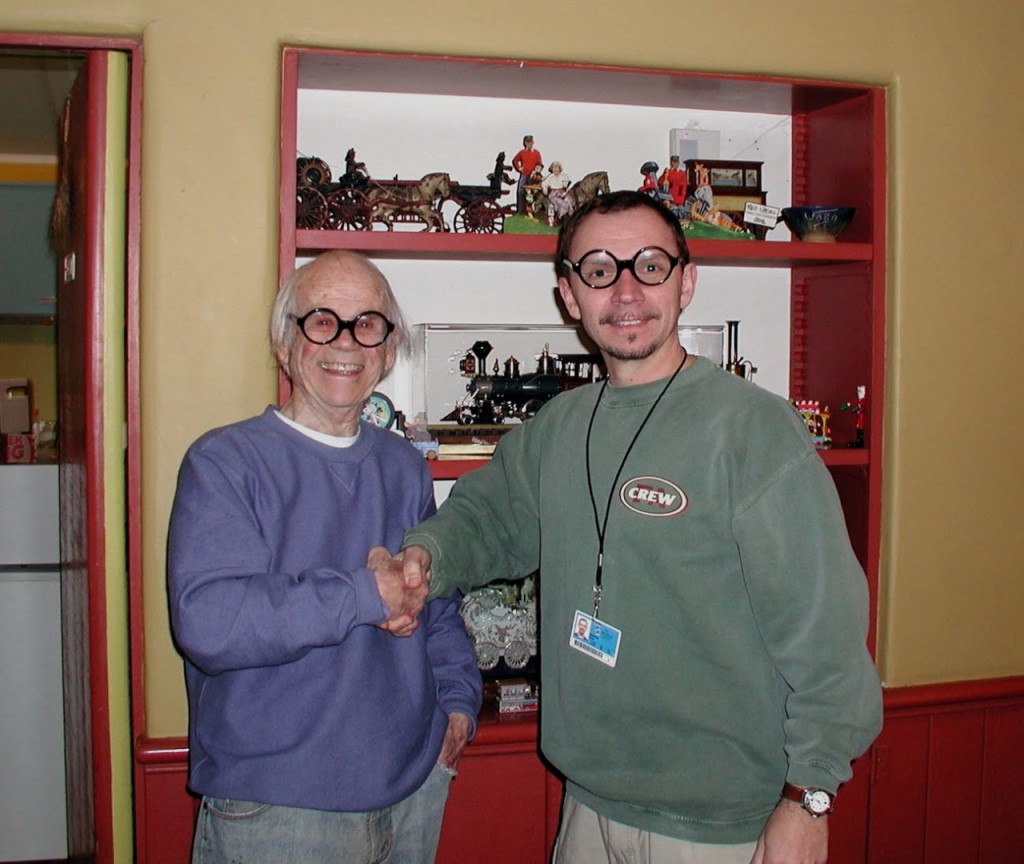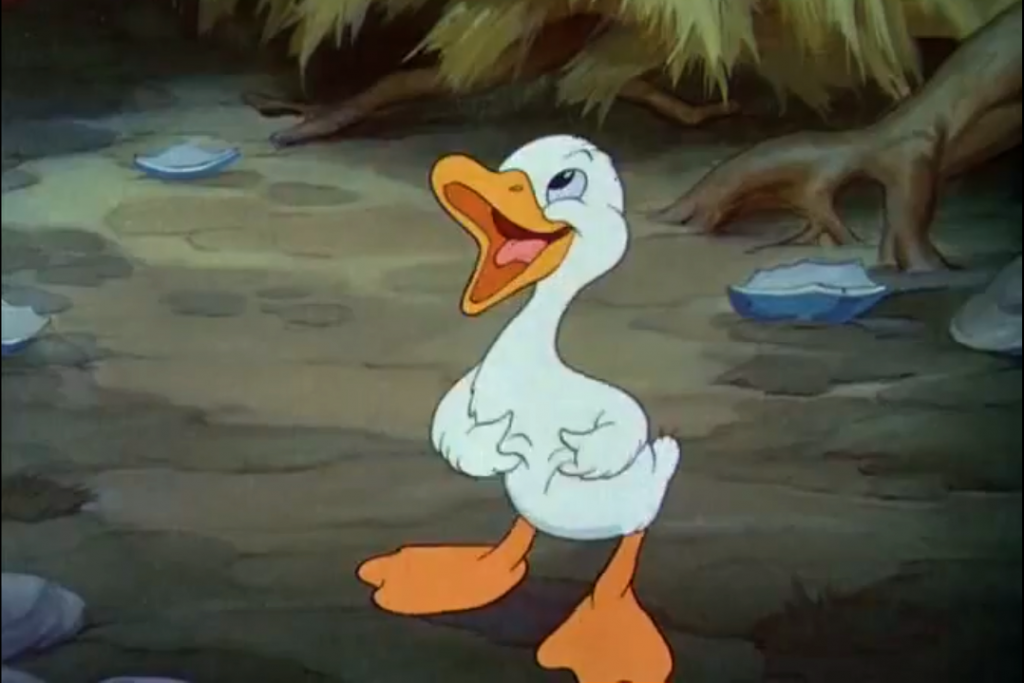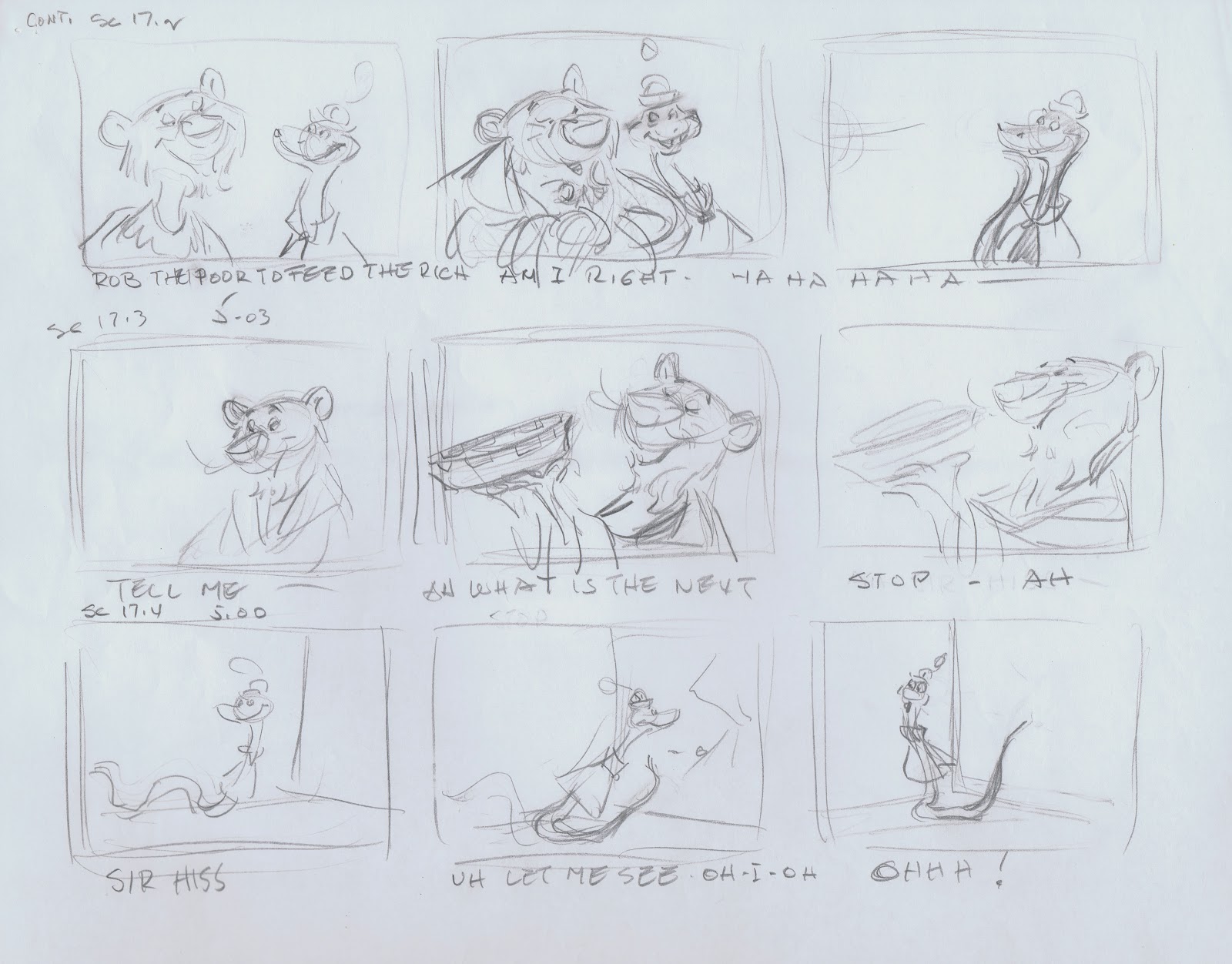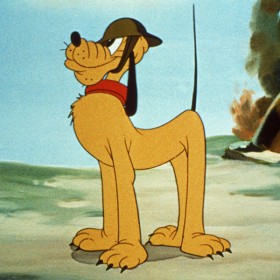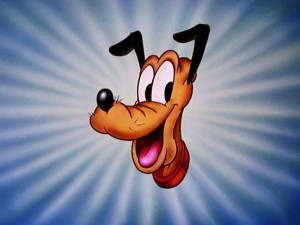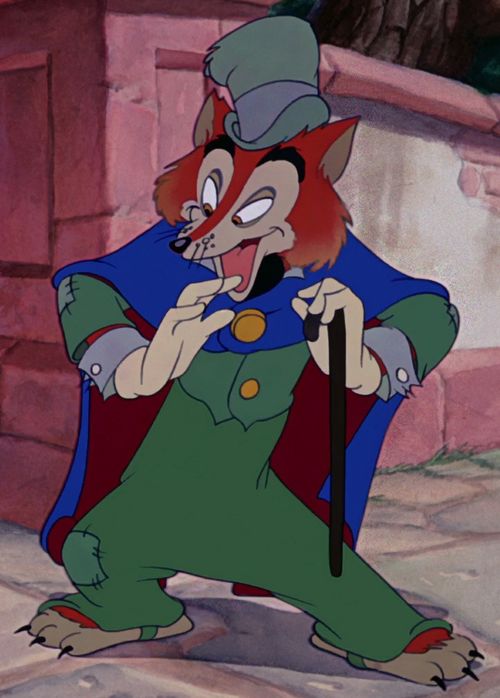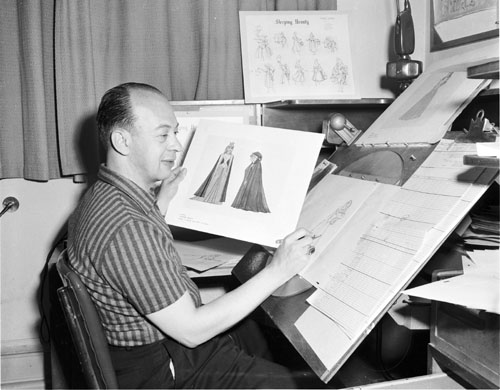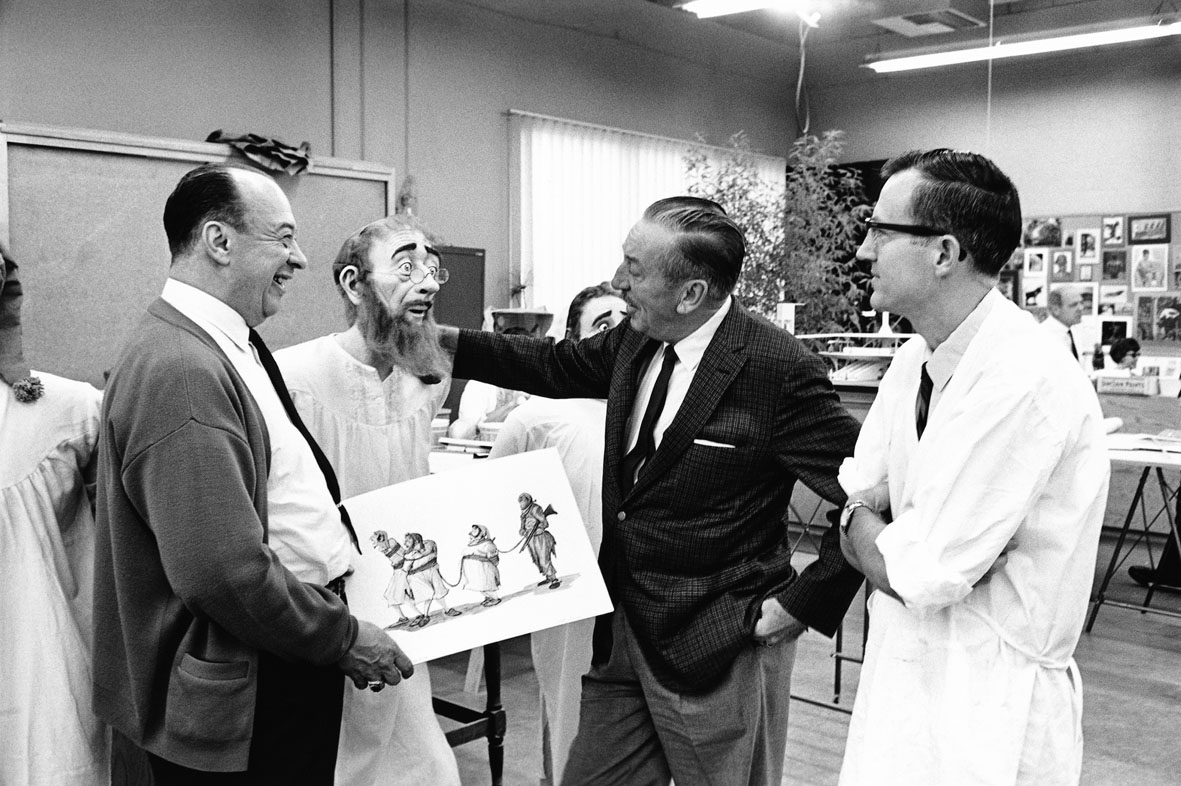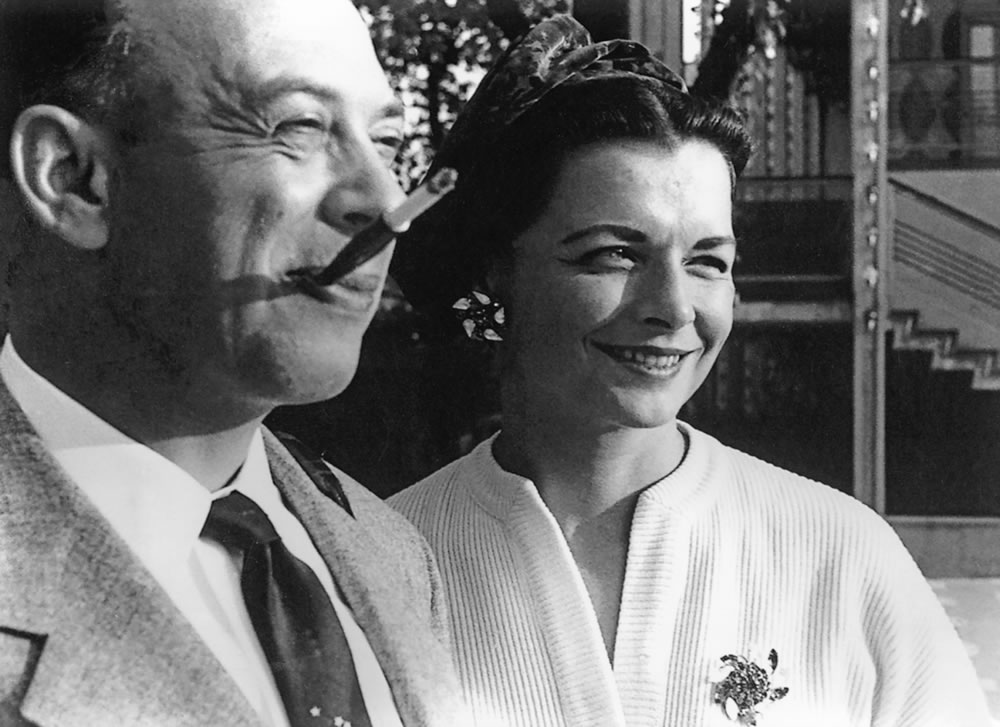The Nine Old Men: How the Group of Disney Animators Inspired Disney Legend Andreas Deja
Walt Disney's Nine Old Men are a group of key animators at The Walt Disney Studios who helped create some of the most memorable characters and stories in animation history. These pioneers have left their mark on our culture and a lot of artists still look to their work for guidance and inspiration today. Chances are, you have seen their work in short films, full-length animated features, and a few attractions at a Disney Destination. A couple of the Nine Old Men have even lent their voices to the more recently released animated feature film: Disney*Pixar's The Incredibles.
Each of them have individually been honored with a Winsor McCay Award, which is an animator's lifetime achievement award and, in 1989, all Nine Old Men were honored as Disney Legends.
These legends have been teachers, mentors, and dear friends for many Disney animators who have contributed to recent films. One animator in particular was recently asked to share his stories and experiences with these legends. He lead the development of the recently released book, The Nine Old Men: Lessons, Techniques, and Inspiration from Disney’s Great Animators that reflects back to their art, their craft, and their personalities. Polish-born and Germany raised Andreas Deja remembers being amazed by the magic of Disney animation after seeing The Walt Disney Studios' 1967 release of The Jungle Book. He was so amazed that he actually applied for a job as a Disney animator at the young age of 10. Disney declined his application but provided motivation and encouragement to continue his studies as they are always looking for new talent. Deja studied Arts in Germany and was hired 10 years later as an animator at The Walt Disney Studios and studied under one of the Nine Old Men, Eric Larson.
Deja has since left his mark on the legacy of Walt Disney Animation and on the animation industry, as a whole. He has lead the animation effort of some of the most memorable Disney characters, like Gaston, Jafar, Hercules, Scar, Lilo, and Mama Odie. Deja was honored with a Winsor McCay Award in 2007 and in 2015, Andreas Deja became a Disney Legend.
To kick off a series of talks dedicated to exploring the lives and achievements of these Nine Men, The Walt Disney Family Museum hosted a discussion with Andreas Deja where he shared the art, techniques, and memorable personal stories of his time with the Nine Old Men. Deja’s recently released book was available for purchase and signing after the presentation.
The discussion followed a similar format to that of his animation blog, Deja View, where he regularly features sketches of the most influential animators in the industry. He commented on how it was technique combined with each of their unique personalities that made the quality of Disney Animation unlike any other studios’. To quote animator Marc Davis, “…it is the ultimate art form, involving drawing, acting, music, dancing, and painting, all combined into one medium.”
Learn more about each of the Nine Old Men:
- Les Clark
- Wolfgang “Woolie” Reitherman
- Eric Larson
- Ward Kimball
- Milt Kahl
- Frank and Ollie
- John Lounsbery
- Marc Davis
Even though this amazing and comprehensive presentation ran longer than planned, both Andreas Deja and The Walt Disney Family Museum were gracious enough to allow the attendees to meet with Deja at the end, who was also signing copies of his newly released book. This presentation was a feast for the eyes and a Disney animation historian fan’s Never Land. The amazing art of Walt Disney’s Nine Old Men can be seen in Andreas Deja’s new book, The Nine Old Men: Lessons, Techniques, and Inspiration from Disney’s Great Animators. You will also find regular updates on Andreas Deja’s animation blog, Deja View.
Les Clark
The first of the Nine Old Men was Les Clark, who joined The Walt Disney Studios in 1927 after graduating high school. Les assisted Ub Iwerks with the animation of one of the scenes from the 1928 debut of Mickey Mouse in "Steamboat Willie."Les' first full animation assignment was on the Studios’ first Silly Symphony, "The Skeleton Dance."
Les, a somewhat quiet man, contributed his animation talent to many other Disney classics, such as The Walt Disney Studios' first Academy Award winning short, “Flowers and Trees”, as well as “The Band Concert”, and the “Sorcerer’s Apprentice” segment of Fantasia.
[gallery size="full" td_select_gallery_slide="slide" ids="135526,135527,135528"]
In the late 1950s, Walt asked Les to direct a few specials for television, including Donald in Mathmagic Land.
After nearly 50 years, Les retired from The Walt Disney Studios in 1976 and passed away just a few years later on September 12th, 1979.
Wolfgang “Woolie” Reitherman
German-born Wolfgang “Woolie” Reitherman was the second Nine Old Men to be highlighted during the presentation and joined The Walt Disney Studios in 1933. Woolie shared this in regards to his love for animation, "It was a romance from the start. The minute you know you can make a drawing move, the static drawing loses its appeal: movement is life.”Woolie contributed his animation efforts to many different Disney classics...
[gallery size="full" td_select_gallery_slide="slide" ids="135546,135548,135549,135550"]
…until becoming the first animator to direct an entire feature film for the Studios, starting with the Disney classic The Sword in the Stone.
His directorial efforts continued with Walt Disney's The Jungle Book, The Aristocats, Robin Hood, and “Winnie the Pooh and the Blustery Day” before retiring in 1981 and losing his life in a car accident in 1985.
[gallery size="full" td_select_gallery_slide="slide" ids="135552,135553,135554,135555"]
Eric Larson
Third on the list was an animator who had provided Deja with some meaningful one-on-one mentoring before launching his animation training program: Eric Larson. Deja considered Eric to be the best animation teacher, ever. Some of the industry’s most influential artists learned from Eric, including Ron Clements, John Musker, Tim Burton, Brad Bird, and Glen Keane. After Eric started with The Walt Disney Studios in the early '30’s, he worked on many different animated shorts and such feature films as Snow White and the Seven Dwarfs, Fantasia, Bambi, Peter Pan, and Lady and the Tramp. After spending 52 years in the industry, animating some of the most memorable Disney characters, Eric retired in 1986.[gallery size="full" td_select_gallery_slide="slide" ids="135560,135561,135562"]
Ward Kimball
The next ‘character' who Deja felt deserved his own talk was Ward Kimball. Kimball’s personality was just as unique as his distinct animation ability.Ward was born in and spent most of childhood in Minnesota. It was after high school that Ward set out to California to enroll in Santa Barbara School of Art to pursue illustration. After seeing Walt Disney’s Three Little Pigs, Ward decided to head to Hollywood to join The Walt Disney Studios. Ward had been contributing his art since 1934, with such memorable characters as Jiminy Cricket, Panchito, The Reluctant Dragon, and Tweedledee and Tweedledum.
[gallery size="full" td_select_gallery_slide="slide" ids="135565,135566,135567,135568"]
During the production of Snow White and the Seven Dwarfs, Ward spent 8 months working on a scene with the Seven Dwarfs eating soup for supper. “...it was very fun and everybody laughed and so did Walt," said Ward. Later, Walt called Ward into his office to tell him that he was going to take the soup scene out of the film and explained why. Walt felt that it wasn’t adding to the flow of the overall film, he needed to get back to the “witch." As much as it may have hurt him, Ward later admitted that it was the right decision.
Later in his career with Disney, Ward produced and directed a number of different live-action and animated short-subject films, including Academy Award-winning "Toot, Whistle, Plunk and Boom."
Ward was also a trombonist in the Dixieland jazz band Firehouse Five Plus Two.
When Ward wasn’t busy with his art or playing in his Dixieland jazz band, Firehouse Five Plus Two, he devoted his time to his railroad passion. It is said that the first recognizable sketch that he made was of a steam locomotive. In 1948, Ward was invited to attend the Chicago Railroad Fair with fellow rail enthusiast, Walt Disney.
Ward owned and operated a full-size locomotive on his two-acre property. He and another animator from the Nine Old Men played a major role in assisting Walt with his own interest in developing and operating the Carolwood Pacific Railroad in Walt's backyard.
Ward passed away in his Los Angeles home on July 8th, 2002, at the age of 88.
Milt Kahl
Deja then focused on a gentleman who seems to have had a strong influence on a lot of animators in the industry: Milt Kahl. Born in San Francisco in the early 1900’s, Milt’s career with Disney started much like Ward Kimball’s with his pursuit of becoming a magazine illustrator. It was after seeing Walt Disney’s "Three Little Pigs" that Milt was motivated to pursue the art of animation.[gallery td_select_gallery_slide="slide" size="full" ids="135574,135575"]
Milt joined The Walt Disney Studios in 1934 and worked as an assistant animator on various different shorts, including Academy Award-winning "The Ugly Duckling."
Over a 40 year period, this incredible draftsman contributed to the creation and animation of many different memorable characters, including Brom Bones, Shere Khan, Prince Philip, and King Louie.
[gallery size="full" td_select_gallery_slide="slide" ids="135577,135578,135579,135580,135581"]
Milt moved back up to the San Francisco - Bay Area after retiring in 1976 and focused on other interests, such as sculpting, before passing away on April 19th, 1987.
Frank Thomas and Ollie Johnston
It was at this point in the presentation that Andreas Deja realized that he had little time left and still planned on presenting the art and share stories of the final four of the Nine Old Men. Beginning with Frank and Ollie, a dynamic duo who had a lifelong friendship and were co-authors for a number of different animation books, including Disney Animation: The Illusion of Life.In 1995, Frank and Ollie were also the subject of a short documentary regarding their friendship and their impact on the animation industry.
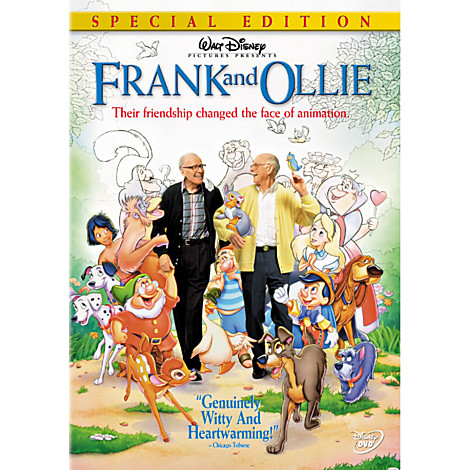 Frank Thomas was born and raised in Fresno, CA and knew at an early age that he wanted to make money by drawing pictures. Frank attended Stanford University in Palo Alto, CA where he met fellow animation enthusiast, Ollie Johnston.
Frank Thomas was born and raised in Fresno, CA and knew at an early age that he wanted to make money by drawing pictures. Frank attended Stanford University in Palo Alto, CA where he met fellow animation enthusiast, Ollie Johnston.
Ollie was born in 1912, the same year as Frank, in Palo Alto, CA. After completing their studies at Stanford, they both migrated down to Los Angeles to attend Chouinard Art Institute before beginning their 43 year career at The Walt Disney Studios - Frank joining in September of 1934 and Ollie in January of 1935.
Both left a long-lasting impact on the animation industry. Frank was known for instilling strong personalities into his characters. Frank once said, "Until a character becomes a personality, it cannot be believed. Without personality, the character may do funny or interesting things, but unless people are able to identify themselves with the character, its actions will seem unreal.”
[gallery td_select_gallery_slide="slide" size="full" ids="135649,135650"]
Ollie was recognized for being sensitive to the relationships between characters. As fellow animator Frank Thomas once said, “Back then, cartoon characters seldom touched unless they hit each other. But one day Ollie said, ‘You know, the act of two people holding hands communicates in a powerful way.’"
Frank contributed to the Dixieland jazz band, Firehouse Five Plus Two, by playing piano with fellow Disney animator Ward Kimball on trombone. With his own backyard railroad and being another train enthusiast, Ollie assisted Walt Disney with his increasing train enthusiasm.
[gallery size="full" td_select_gallery_slide="slide" ids="135647,135648"]
Frank passed away on September 8th, 2004, and Ollie, the last of the surviving Nine Old Men, passed away on April 14th, 2008.
John Lounsbery
Ohio-born, Colorado-raised, John Lounsbery was next on the list of legends. After receiving a diploma from the Art Institute in Denver in 1932, John moved to Los Angeles where he worked as a freelance artist and attended the Art Center School of Design. John had joined The Walt Disney Studios in 1935 after one of his instructors had mentioned to him that the Studios were looking for artists.Before being promoted to directing animator, John focused a lot of his time on “Pluto” shorts.
John was considered to be more of a shy, lighthearted individual, but you would have never guessed that based on how dynamic his characters were. In their book, Disney Animation: The Illusion of Life, Frank and Ollie wrote that John could always make “some funny observation to lighten the situation.” No matter what kind of drama was taking place.
John was directing animator on a number of different Studio classics, including Walt Disney’s Dumbo, Peter Pan, Song of the South, The Jungle Book, and Robin Hood.
[gallery size="full" td_select_gallery_slide="slide" ids="135656,135657,135658,135659"]
John’s last directing contribution would be for The Rescuers before he passed away on February 13th, 1976.
Marc Davis
Walt Disney’s Renaissance Man, Marc Davis, was the last artist to be featured.“Marc can do story, he can do character, he can animate, he can design shows for me. All I have to do is tell him what I want and it’s there. He’s my Renaissance Man.” - Walt Disney
Born in Bakersfield, CA, Marc attended more than 20 different schools throughout the country due to his father’s involvement with oil field developments. He enrolled in the Kansas City Art Institute after high school before heading back out West and attending the California School of Fine Arts in San Francisco and Otis Art Institute in Los Angeles. During his studies, Marc would often visit local zoos and spend hours drawing the animals. His animal art is considered to be one of his specialties, with his story drawings for Walt Disney's Bambi believed to be some of the finest to ever come out of The Walt Disney Studios.
[gallery size="full" td_select_gallery_slide="slide" ids="135662,135663"]
Back in 1935, Marc applied at The Walt Disney Studios and is said to have been hired on the spot with his strong portfolio of both human and animal anatomical studies. Starting off as an apprentice animator on Walt Disney's Snow White and the Seven Dwarfs, Marc was then moved to story sketch and character design for the following features, including Bambi.
[gallery size="full" td_select_gallery_slide="slide" ids="135664,135665"]
Marc animated some of the most memorable characters from many of The Walt Disney Studios' classic films, including Cinderella, Tinker Bell, Princess Aurora, Maleficent, and Cruella De Vil.
[gallery size="full" td_select_gallery_slide="slide" ids="135666,135667,135668,135669,135670,135671,135672"]
Marc Davis would then become one of the original Imagineers and worked closely with Walt Disney to assist with the design and development of Disneyland in Anaheim, CA. Marc’s roster of story and character contributions include many iconic attractions, such as, The Jungle Cruise, Walt Disney’s Enchanted Tiki Room, it’s a small world, Pirates of the Caribbean, Haunted Mansion, and the just as iconic but never built, The Western River Expedition.
[gallery size="full" td_select_gallery_slide="slide" ids="135673,135674,135675,135676,135677"]
“Marc Davis became the most prolific Imagineer of his time in developing ideas and drawings for Disney Park attractions. There is a treasury of some of the world’s best-known and most humorous characters.” - Disney Legend and Imagineer Marty Sklar.
Long Beach artist, Alice Estes, married Marc Davis in 1956 and later began working with each other at The Walt Disney Studios. Alice’s contributions include costume design for the Audio-Animatronics characters in both it’s a small world and Pirates of the Caribbean. Both were long-time supporters of a foundation that Walt and Roy Disney founded, the California Institute of the Arts.
Even though he had retired in 1978, Marc continued to consult with Walt Disney Imagineering in their development of EPCOT Center and Tokyo Disneyland. Marc passed away in Glendale, CA, home of Walt Disney Imagineering, on January 12th, 2000.

